
Digital art refers to any artistic work or practice that uses digital technology as part of the creative or presentation process. It can also refer to computational art that uses and engages with digital media.
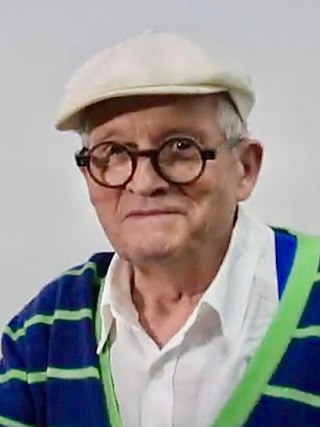
David Hockney is an English painter, draftsman, printmaker, stage designer, and photographer. As an important contributor to the pop art movement of the 1960s, he is considered one of the most influential British artists of the 20th century.

The BBC Domesday Project was a partnership between Acorn Computers, Philips, Logica, and the BBC to mark the 900th anniversary of the original Domesday Book, an 11th-century census of England. It has been cited as an example of digital obsolescence on account of the physical medium used for data storage.
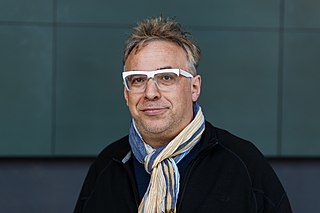
Lev Manovich is an artist, an author and a theorist of digital culture. He is a Distinguished Professor at the Graduate Center of the City University of New York. Manovich played a key role in creating four new research fields: new media studies (1991-), software studies (2001-), cultural analytics (2007-) and AI aesthetics (2018-). Manovich's current research focuses on generative media, AI culture, digital art, and media theory.
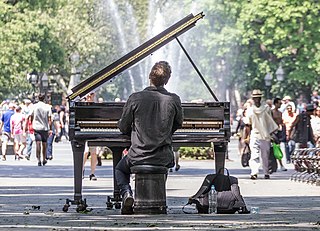
Placemaking is a multi-faceted approach to the planning, design and management of public spaces. Placemaking capitalizes on a local community's assets, inspiration, and potential, with the intention of creating public spaces that improve urban vitality and promote people's health, happiness, and well-being. It is political due to the nature of place identity. Placemaking is both a process and a philosophy that makes use of urban design principles. It can be either official and government led, or community driven grassroots tactical urbanism, such as extending sidewalks with chalk, paint, and planters, or open streets events such as Bogotá, Colombia's Ciclovía. Good placemaking makes use of underutilized space to enhance the urban experience at the pedestrian scale to build habits of locals.
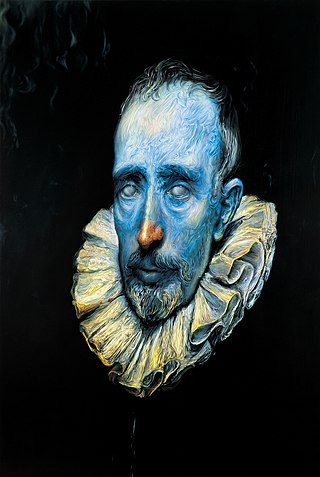
Glenn Brown is a British artist known for the use of appropriation in his paintings. Starting with reproductions from other artists' works, Glenn Brown transforms the appropriated image by changing its colour, position, orientation, height and width relationship, mood and/or size. Despite these changes, he has occasionally been accused of plagiarism.
Social practice is a theory within psychology that seeks to determine the link between practice and context within social situations. Emphasized as a commitment to change, social practice occurs in two forms: activity and inquiry. Most often applied within the context of human development, social practice involves knowledge production and the theorization and analysis of both institutional and intervention practices.
The conservation and restoration of new media art is the study and practice of techniques for sustaining new media art created using from materials such as digital, biological, performative, and other variable media.
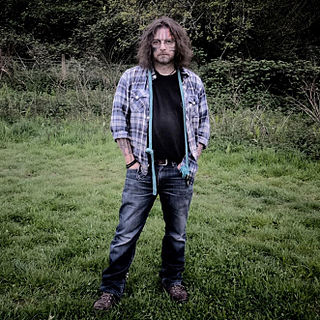
Ian McKay is a British writer, art critic, publisher and translator. A former editor of Contemporary Art magazine, and the founder-editor of The Journal of Geography and Urban Research, throughout the 1990s he was best known for his writings on the arts of Eastern Europe, being cited as the first British art critic to emphasize the negative impact of the western art market in that region. Throughout the 1990s and early-2000s, he was a contributor to a wide range of art journals, as well as writing on subjects relating to photography, cinema, and music. Since 2007 his publishing activities have mainly centred on UK Rural Affairs, and the environment however. Though periodically he continues to publish works of art criticism, his most recent publications concern social justice in rural Britain, as well as environmental conservation in the wider European sphere. He has also worked as an academic in several UK universities.
Participatory art is an approach to making art which engages public participation in the creative process, letting them become co-authors, editors, and observers of the work. This type of art is incomplete without viewers' physical interaction. It intends to challenge the dominant form of making art in the West, in which a small class of professional artists make the art while the public takes on the role of passive observer or consumer, i.e., buying the work of the professionals in the marketplace. Commended works by advocates who popularized participatory art include Augusto Boal in his Theater of the Oppressed, as well as Allan Kaprow in happenings.
Greg Stimac is an American artist who lives and works in California. His work is held in the collections of the Museum of Contemporary Photography and Museum of Contemporary Art, Chicago.
Kingsley Ng is an interdisciplinary artist working primarily on conceptual, site-specific and community-oriented projects. Ng crafts relationship between the work and its context through media and formats including interactive installation, public workshop, sound, spatial design and experiential design.

New media art includes artworks designed and produced by means of electronic media technologies, comprising virtual art, computer graphics, computer animation, digital art, interactive art, sound art, Internet art, video games, robotics, 3D printing, and cyborg art. The term defines itself by the thereby created artwork, which differentiates itself from that deriving from conventional visual arts. New Media art has origins in the worlds of science, art, and performance. Some common themes found in new media art include databases, political and social activism, Afrofuturism, feminism, and identity, a ubiquitous theme found throughout is the incorporation of new technology into the work. The emphasis on medium is a defining feature of much contemporary art and many art schools and major universities now offer majors in "New Genres" or "New Media" and a growing number of graduate programs have emerged internationally. New media art may involve degrees of interaction between artwork and observer or between the artist and the public, as is the case in performance art. Yet, as several theorists and curators have noted, such forms of interaction, social exchange, participation, and transformation do not distinguish new media art but rather serve as a common ground that has parallels in other strands of contemporary art practice. Such insights emphasize the forms of cultural practice that arise concurrently with emerging technological platforms, and question the focus on technological media per se. New Media art involves complex curation and preservation practices that make collecting, installing, and exhibiting the works harder than most other mediums. Many cultural centers and museums have been established to cater to the advanced needs of new media art.
Ecological art is an art genre and artistic practice that seeks to preserve, remediate and/or vitalize the life forms, resources and ecology of Earth. Ecological art practitioners do this by applying the principles of ecosystems to living species and their habitats throughout the lithosphere, atmosphere, biosphere, and hydrosphere, including wilderness, rural, suburban and urban locations. Ecological art is a distinct genre from Environmental art in that it involves functional ecological systems-restoration, as well as socially engaged, activist, community-based interventions. Ecological art also addresses politics, culture, economics, ethics and aesthetics as they impact the conditions of ecosystems. Ecological art practitioners include artists, scientists, philosophers and activists who often collaborate on restoration, remediation and public awareness projects.
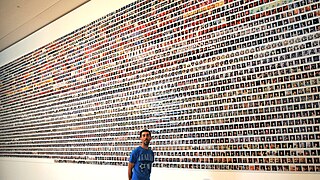
Marc Tasman is an American Intermedia artist who works in a variety of media, including interactive art, performance art, video art, and photography. He is currently a Senior Lecturer at the University of Wisconsin–Milwaukee in the Department of Journalism, Advertising, and Media Studies.

Aviva Rahmani is an Ecological artist whose public and ecological art projects have involved collaborative interdisciplinary community teams with scientists, planners, environmentalists and other artists. Her projects range from complete landscape restorations to museum venues that reference painting, sound and photography.

Anthony White is an Australian visual artist. A National Art School, Sydney, graduate, White has worked and lived in Paris since 2009. White has held solo exhibitions in Melbourne, Sydney, Paris, Latvia, London and Hong Kong.

The Lancaster Institute for the Contemporary Arts is an academic institution, art school, and arm of the University of Lancaster, that delivers research and teaching in fields of contemporary art and design; including in the subject areas of Fine Art, Theatre, Design, and Film studies. The institute also houses two research centres: Insight and Imagination. LICA has a close working relationship with the public arts organisation: Lancaster Arts.
April Hickox is a Canadian lens-based artist, photographer, teacher and curator whose practice includes various medias, from photography, film, video and installation.

The Usher Gallery is an art museum in Lincoln, England. The gallery displays a collection of artworks by painters such as J. M. W. Turner and L. S. Lowry. Established in 1927, it is run as part of the Collection.















